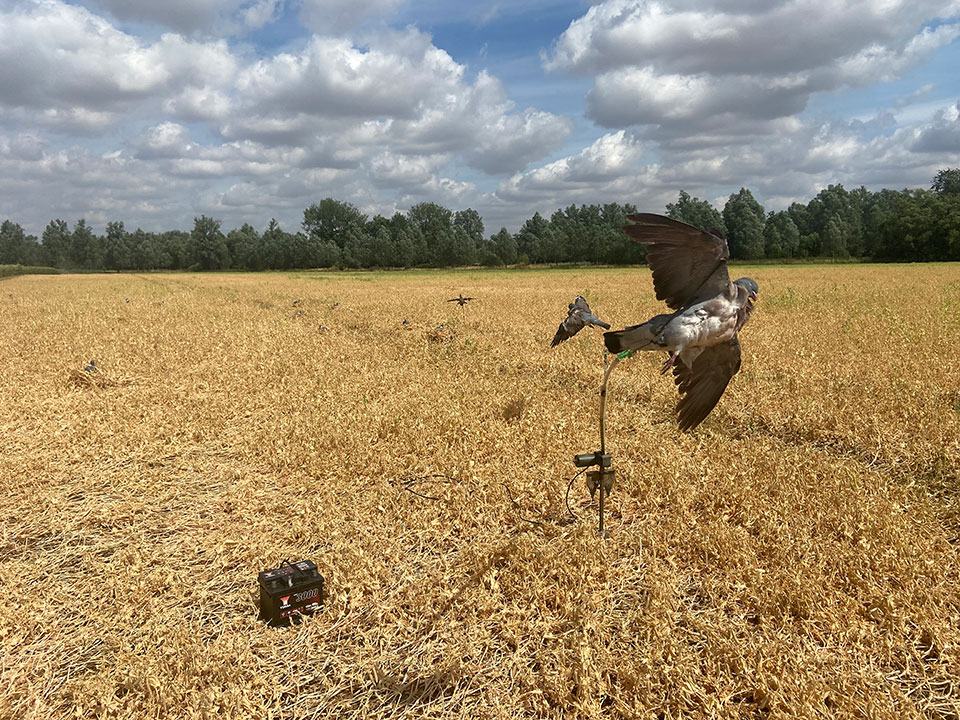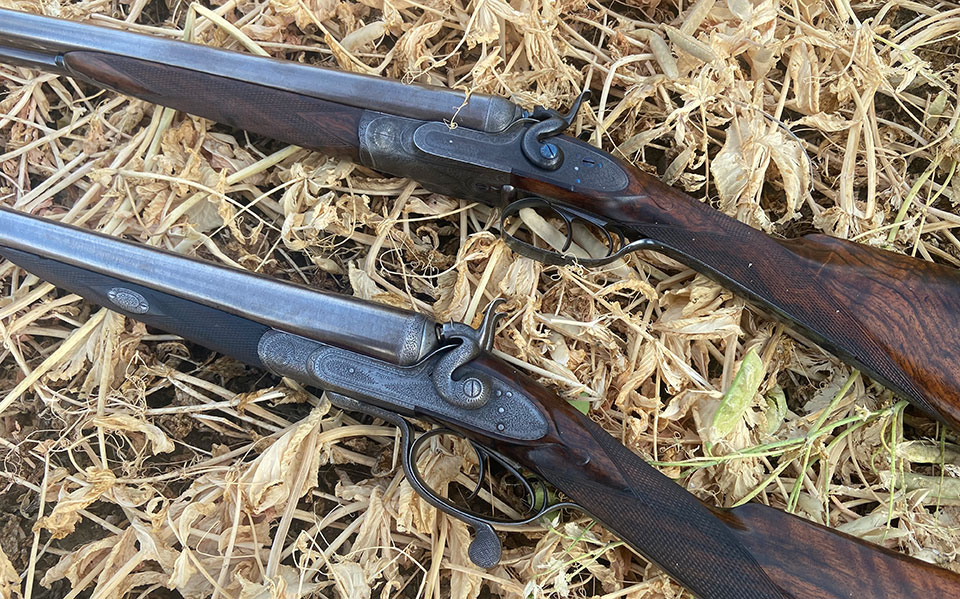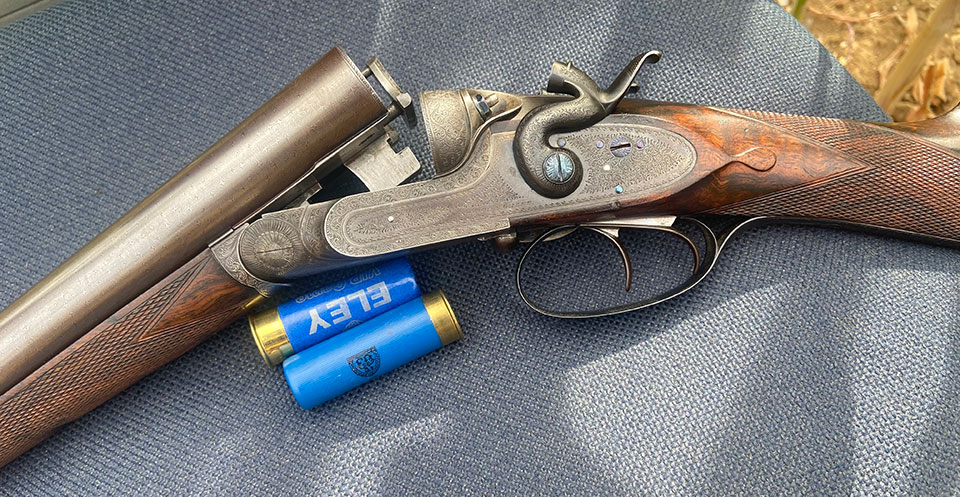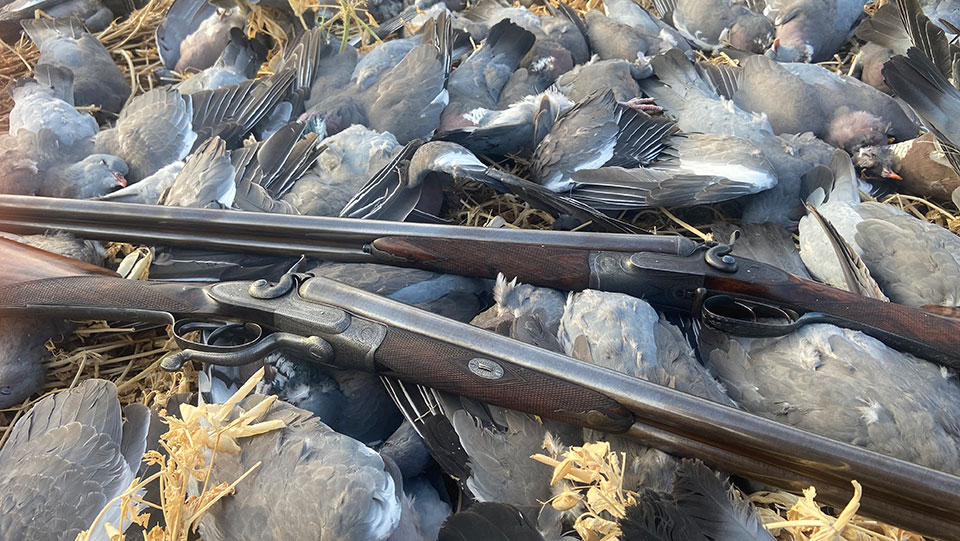I have always thought a pigeon hide is a great place to test a gun and gauge how well it suits you.
Depending on the wind, the weather and the position of the hide, pigeons can present a real variety of shots; incoming, outgoing, close-in, on the edge of range, quartering either way, rising, dropping, speeding-up, slowing-down, even flying right overhead.
In the hide for the whole day, you have time to inspect the gun repeatedly each time there is a lull in activity. You also get to observe it and feel its mechanisms working when pressed into action during flurries of incomers.
Recoil, stock fit, balance and ‘like-ability’, all get properly assessed over the eight or ten hours a full day’s decoying can encompass. Away from the distractions and pressures of a driven shoot, the hide provides a great testing ground.
Many are the days I have taken three or four newly acquired vintage guns pigeon shooting to assess whether each one is a keeper or needs to be moved on. I have always asserted that a beautiful gun I can’t shoot is useless and must go.

In July this year, I was invited to join Paul Payne in Essex to help protect a pea crop close to harvest time from the hoards of wood pigeons feeding on them.
Paul is a life-long pigeon shooter and a student of the art, having shared a hide with all the greats of the past and present, including Archie Coats, Peter Theobald and Will Garfit.
He has some unconventional ideas about the sport, claiming that ‘shiny plastic decoys work fine, light coloured nets provide better cover for human faces and hands than do dark green ones and that hides do not need to be very elaborate or well disguised. He prefers to set up in the middle of a field if he can and even uses a huge umbrella for shade when the sun is too hot!
both guns have 30” Damascus barrels and neither cost me more than £650
The key tactic is controlled movement. Get up slowly when the bird is committed to landing and it won’t even see you. Paul shoots his trusty old Miroku. I, however, took a W. Thorn of Pall Mall, 12-bore, bar action hammer gun with non-rebound locks and a Jones-lever action.
As back up, I had an 1885, 16-bore Stephen Grant bar-action hammer gun with side-lever and rebounding locks. Both guns have 30” Damascus barrels and neither cost me more than £650 to buy, though the Grant required a fair bit of restoration.

The Grant is quite tightly choked, certainly in the left barrel, while the Thorn has no choke at all, having been made in 1873 or ’74, just before Greener excited everyone with his 1875 press announcement that he had perfected choke boring.
My 12-bore cartridges were a mixture of what I had left in game bags from last season; mostly Hull High Pheasant, Gamebore Pure Gold and an assortment of odds and ends. All were fibre wad, 28 or 30 grams and No.6 shot.
The 16-bore shells were Gamebore Regal, Eley VIP paper-case or old Eley Grand Prix in plastic cases. These were mostly 26 gram or 28 gram, No.5 or No.6 shot and all fibre wad. I have often lamented the fact that while it is possible to buy 21 gram 12-bore cartridges, the lightest 16-bore load I can reliably find is 25 grams. This is not really a problem for game shooting but it does make simulated driven days expensive and harder-recoiling than ideal, when using a sixteen.

Paul set-up the hide, the sun was out and the promised forecast of cloud and wind didn’t materialise. Instead, we cooked under blue skies and direct sunshine, until Paul set-up the dreaded umbrella! That provided some welcome shade and, to my surprise, didn’t seem to deter the pigeons at all.
with the temperature dropping a little, we started to see more birds
We enticed a few towards the decoy, magnet and flapper set-up we had and they provided intermittent opportunities throughout the day. By four o’clock we had close to fifty. Then, with the temperature dropping a little, we started to see more birds in the air and the shooting got busier. For safety, we had only one gun loaded at a time and took turns to shoot.
I alternated between the two guns, loading from different cartridge bags, with only the relevant one open at any time. By the time we decided to head home for supper, we had one-hundred-and-twenty birds on the floor.
It took an hour to collect them up, deconstruct the hide and pack everything into the Land Rover. Then a quick telephone call to a chap who would be waiting to collect the shot birds that evening (he uses them to feed his prize-winning ferrets).

That afternoon reminded me what great sport pigeon shooting provides, while protecting a valuable crop from the ravages of multiple hungry mouths and re-connecting with some of my favourite guns in a different context.
It also underlined the fact that we never stop learning. Paul is a true master of his art and listening to him, watching him set-up his decoys, flappers and hide and, of course shoot, was an education.
There is something meditative about pigeon shooting, it forces you to sit, relax, focus and be in the moment for a whole day, ignoring the usual demands and distractions of daily life and business. Doing it with beautiful old hammer guns makes it more so.
It also gives you time to think about your shooting and make mental adjustments. I think it makes you a better and more considered shot. I used to do a lot of pigeon shooting but have fallen out of the habit in recent years. I plan to to do more of it in future. A lot more.
Published by Vintage Guns Ltd on (modified )




